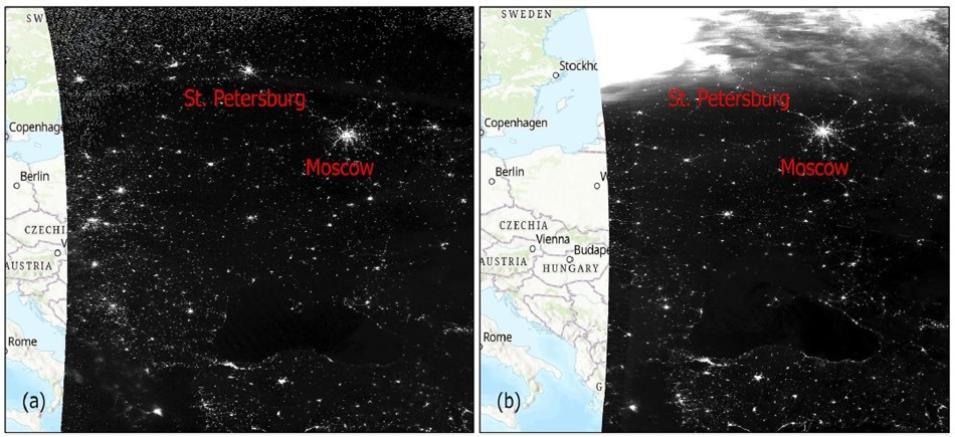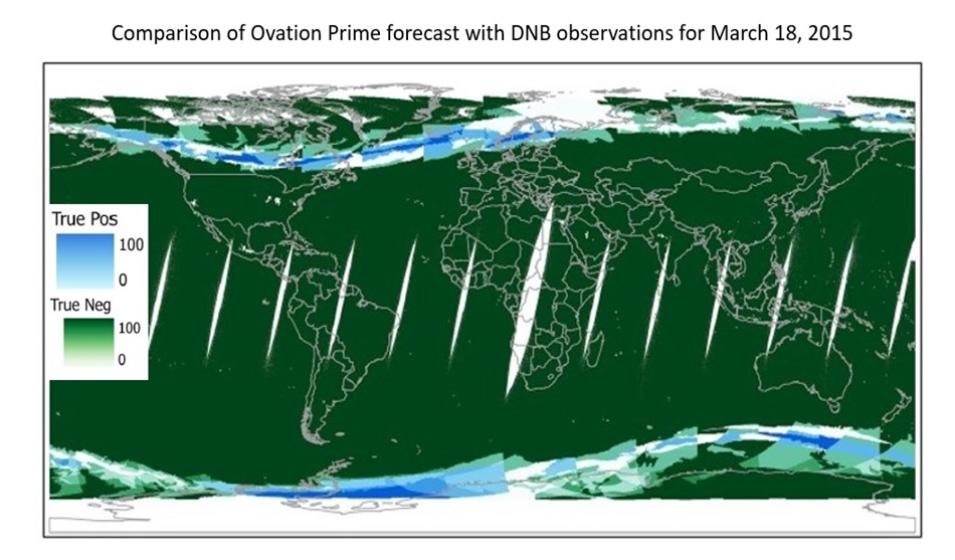Introduction
Researchers in a variety of disciplines use NASA’s nighttime lights imagery to track the expansion of human settlements and economic activity, energy use, disaster impacts, and more. However, more than 20% of Earth's population live in areas where the presence and effects of aurorae can dilute measurements of anthropogenic light sources.
At the same time, researchers focused on space weather—the ever-changing conditions in space around Earth caused by solar events like flares, eruptions, and streams of charged particles—value the contributions of nighttime lights data, as they provide model/product validation and help characterize spatially explicit auroral activity. Evaluating the analysis of space weather predictions is critical for forecasters, users, modelers, and stakeholders as such evaluation can identify strengths and weaknesses of forecast products, facilitate their improvement, and identify additional sources of data that might bolster aurorae monitoring efforts.
For both research areas, it is critical to be able to identify and differentiate between nighttime lights signals and light contamination from aurorae.


